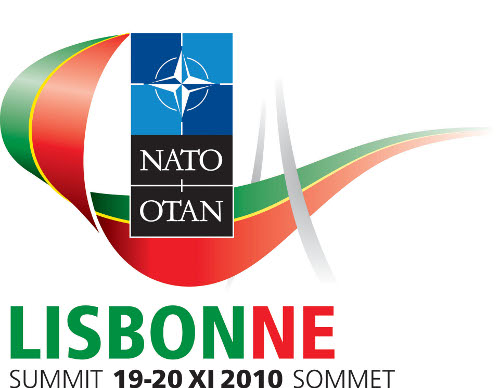
When NATO leaders gather in Lisbon on November 19 for the alliance’s annual summit, what sort of conversations should they be having about the future of the organization? How should the Strategic Concept be translated from the realm of aspiration into political realities?
The Europe-Russia Study Group at the U.S. Naval War College met to assess these questions.
Tom Fedyszyn noted that any discussion about NATO must take into account three realities. The first is that defense budgets are going down—and that there is no way to convince the publics of the NATO member-states to increase funding. Linked to this is the reality that a U.S. itself downsizing its military establishment will increasingly disengage from Europe to focus on new challenges in the Middle East and Asia. The second is that, when faced with “hard” or “soft” power missions, the trend is for the alliance—as an alliance—to focus on the “soft” aspects. The final point is that no matter what is said in Western capitals, Russia will always feel itself threatened by the Article 5 guarantee that is at the heart of NATO, which has always complicated efforts to forge a NATO-Russia partnership—and continues to produce friction as NATO brings in new members.
Echoing Fedyszyn’s first point, John Cloud observed that most European countries don’t see any major threat to their security that requires ramping up the funding for NATO’s hard-power capabilities, contributing to the declining defense budgets of most NATO members. But as Michael Fierro pointed out, some of the members in the Baltic and Black Sea regions are still concerned about Russian intentions and prize the Article 5 guarantee (a point also raised by Brent Boston)—which leads to the complications Fedyszyn pointed out.
Cloud notes that historically, the U.S. is the one that has “demanded” things of NATO—to take on a mission or undertake an intervention—while other NATO members have relied on the security of Article 5 rather than making requests of the alliance (with the exception of Turkey seeking protection in the event that Turkey was targeted by Iraq in the run-up to the Iraq War). But this also relies on an assumption that U.S. hard power is available and on-call to “save Europe.” And while NATO ensures that the United States continues to have a seat at the European table and to be a European power, has it also inhibited the rise and consolidation of a distinct European defense identity—a question posed by Lyle Goldstein. But the alternative in which the U.S. downgrades the importance of NATO is one where NATO effectively ceases to exist.
Fierro points out that these unsettled questions lead to problematic realities on the ground, ones where “material fulfillment” of NATO requirements—say the provision of forces or equipment for specific missions—is not “meaningful fulfillment” — and where there are disconnects between what individual countries are providing and who has responsibility for making decisions. Tied in with this are larger questions about the zone of NATO activities: the “world” as a whole, or still grounded in the geographic space of the Atlantic ocean? This means, as Goldstein observed, that NATO is not a flexible actor for either diplomacy or intervention, and whether the alliance should be a provider of “hard” security or move in the direction of stabilization operations.
Angus Ross reiterated a point that I have also made—that there “is no deep-seated political will or desire among the member states to dissolve the alliance or proclaim its ‘mission accomplished.’” NATO and its related programs in the Partnership for Peace have also been important for developing and strengthening the networks and partnerships among a growing number of countries, providing for more effective multilateral cooperation—a point raised by Al Shimkus (and also something that U.S. ambassador to NATO Ivo Daalder continuously points out, the “economies of scale” generated by the alliance.) No want wants to disband NATO—but no one is particularly satisfied with where the alliance is currently situated.
Changes in how the alliance achieves consensus and how NATO shares the security portfolio with the EU might point a way towards the future. Is there a realistic division of labor, with NATO being the umbrella for missions where the U.S. plans to be engaged, and the EU increasingly takes on missions that may impact European security but not trans-Atlantic security as a whole? Another option, one suggested by Ross, is that we move to a two-consensus system in NATO: a mission might be endorsed by the alliance as a whole, but not made binding on every member; NATO’s rule of unanimous consent for the operational and strategic decisions would then apply only for those countries who have opted in to the mission. This might provide a workable medium between trying to make a NATO mission acceptable at the lowest common denominator to every alliance member, and dispensing with the alliance altogether to form ad hoc coalitions of the willing.
The Lisbon summit will probably focus on issuing consensus statements to reinforce the appearance of alliance unity. But behind the scenes, frank and open conversations about the alliance’s future are imperative if NATO is to remain a vital and relevant security organization for the 21st century.
Nikolas K. Gvosdev, a contributing editor at the Atlantic Council, is professor of national security decision making at the U.S. Naval War College. This report represents the personal impressions of Nikolas K. Gvosdev and does not reflect any official position of the Naval War College or the U.S. government; it is also not a transcript of the remarks of the Europe-Russia Study Group members.
This article is part of a New Atlanticist discussion – The 2010 Lisbon Summit: A New Atlanticist Forum – on the Summit’s expectations, areas of focus, and potential outcomes.
Image: Lisbon%20Logo%20500_0.jpg
